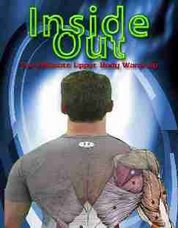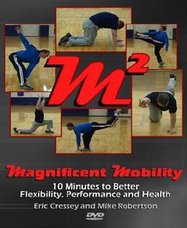This was recently sent to me by a client and fitness enthusiast regarding core training; his friend was trying the following exercise and wanted to know if it was dangerous or not. First, here's the link:
http://www.youtube.com/watch?v=Are-ApIH27Q
Now, before all the Crossfit people out there go nuts on me for saying this, understand that I'm only going to critique the EXERCISE, not Crossfit as a whole. In fact, I used to subscribe to this kind of core training myself, so I'm definitely not beyond reproach.
The fact of the matter is that repeated flexion and extension of the lumbar spine probably is not a good idea. Sure, there are people out there who have done exercises like this for years and never been injured. However, there are also people out there that always pull deadlifts with a round back and never had a back injury. Keep in mind, these people are quite often exceptions to the rule - just because they haven't been injured doesn't mean they're right.
Here's a little quote from one of Eric Cressey's recent blog posts from a similar vein:
“Repetitive flexion-extension motions with low magnitude compressive forces have been shown to be an effective mechanism for causing disc herniations.”
(Note: You can check out Eric's entire blog post here: Herniating a Disc 101).
Unfortunately, we're still very caught up in the idea of moving our lumbar spine during core training movements. Whether it's excessive flexion, rotation, extension or even side-bending, the muscular make-up of the core region, coupled with the lack of rotary capacity at the lumbar spine, leads me to believe that work to stabilize or spare the spine should be our primary goal. And keep in mind, too, this is only focusing on the region we're working, while the body works as a functional, integrated unit. Excessive shortening of the rectus abdominus can also wreak havoc on the rib cage, pulling us into an excessively kyphotic posture and beating the hell out of our shoulders.
Since my first article on core training, I've written two more that reflect my current stance on core training; you can find them here:
Core Training for Smart Folks
High Performance Core Training
The exercises outlined here not only train the core in appropriate postures (i.e. the ones we're in every day), but teach the surrounding muscles to resist movement rather than promote it.
I hope this helps answer your question.
Stay strong
MR
High Octane Corrective Exercise and Performance Enhancement | www.RobertsonTrainingSystems.com
Subscribe to:
Post Comments (Atom)









No comments:
Post a Comment